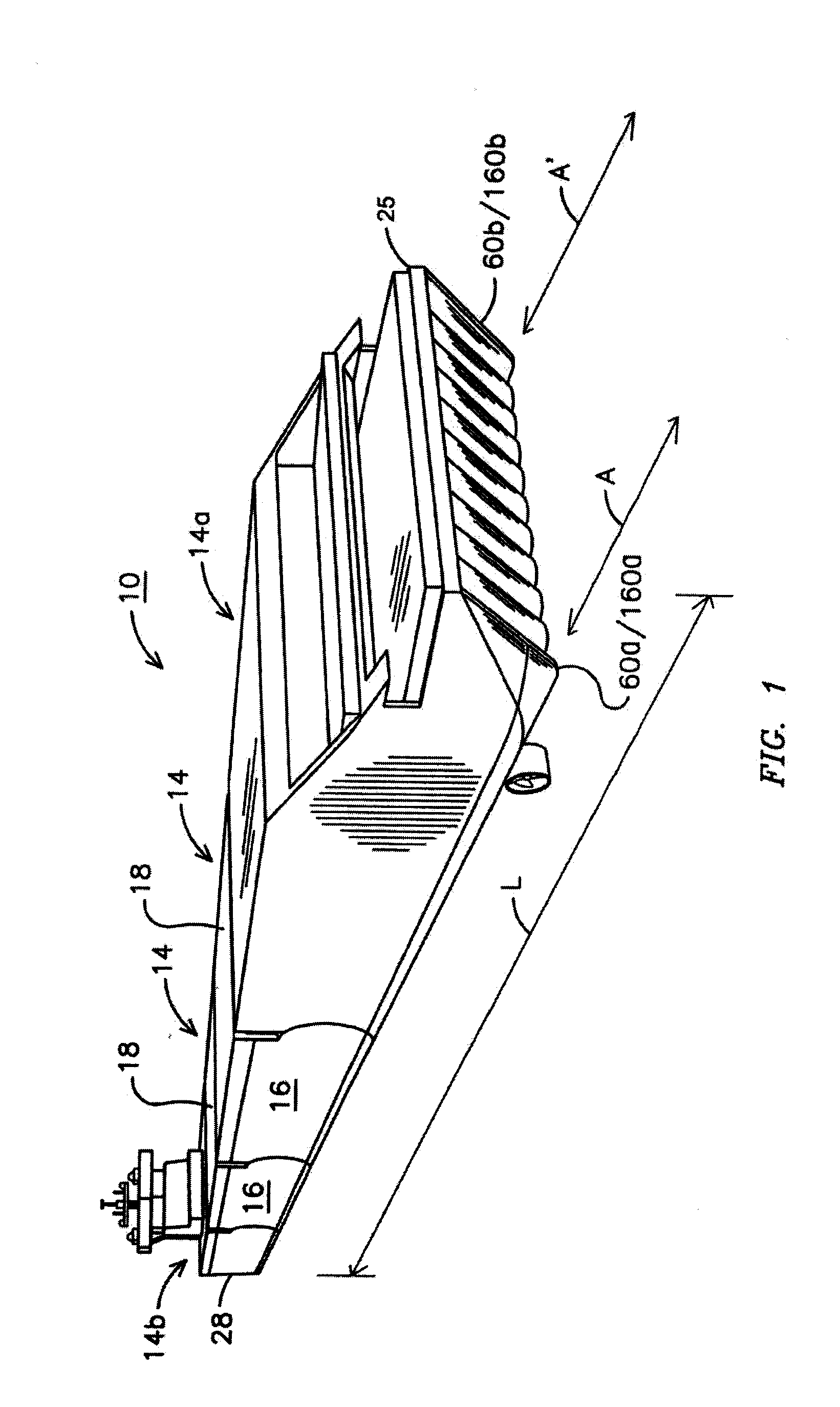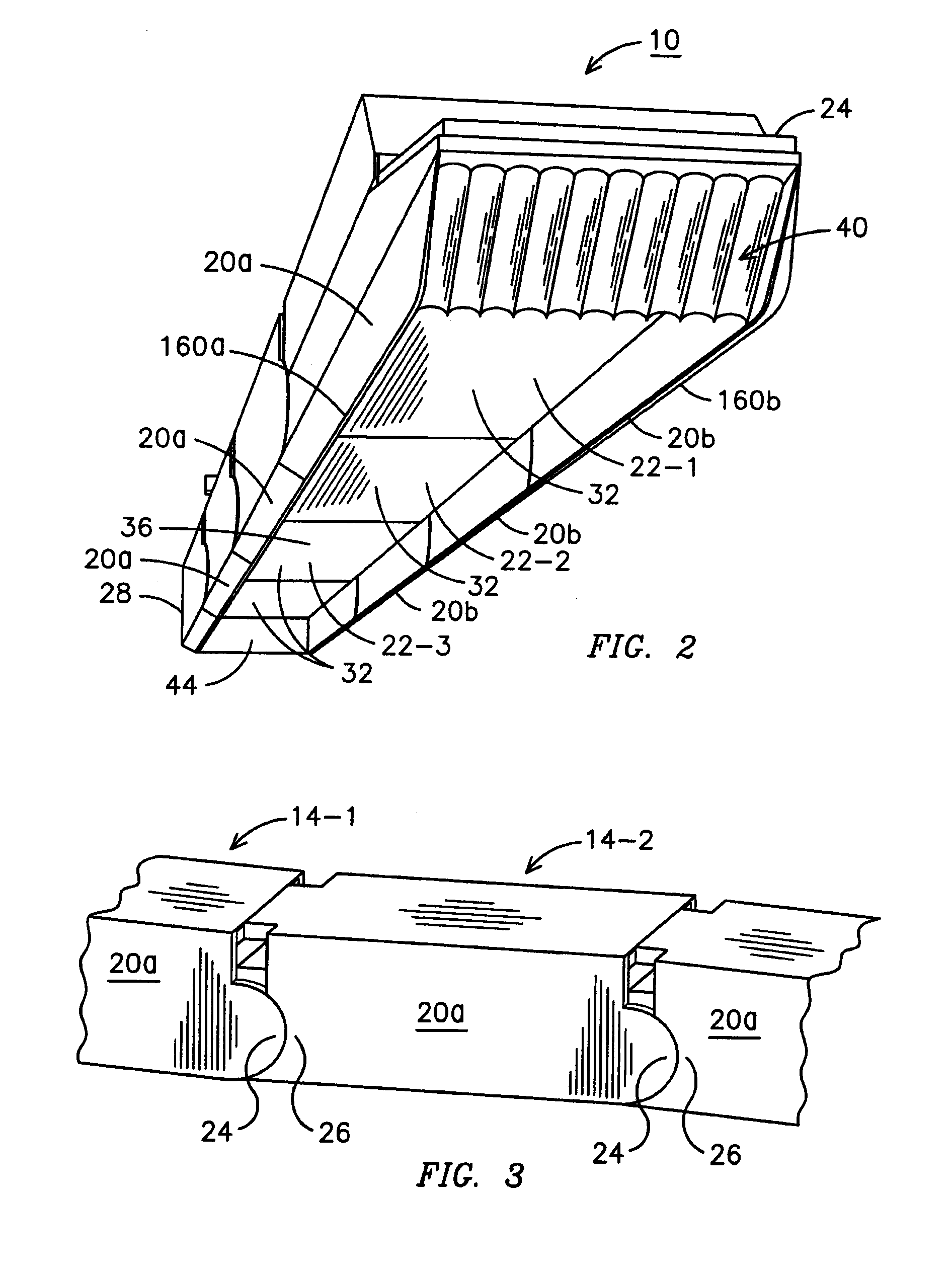Ship and associated methods of formation with vessels connectable between decks and hulls
a technology of connecting decks and hulls, which is applied in the field of ships, can solve the problems of high operational cost, less choice of transportation modes, and limited low-cost choices, and achieve the effect of reducing the cost of freight transportation and high operational cos
- Summary
- Abstract
- Description
- Claims
- Application Information
AI Technical Summary
Benefits of technology
Problems solved by technology
Method used
Image
Examples
Embodiment Construction
[0025]Before describing in detail example embodiments according to the invention, it is noted that the invention includes a novel and non-obvious combination of elements and method steps. So as not to obscure the description, details of elements and steps pertinent to the invention are emphasized in the figures and written description, without illustrating in the figures certain associated elements and steps which are otherwise conventional or which will be readily apparent to those skilled in the art.
[0026]With reference to the simplified perspective view of FIG. 1, there is shown, according to one embodiment of the invention, an exemplary ship 10 comprising multiple vessels 14 arranged in a serial assembly for tandem movement as one unit or ship. Adjacent ones of the vessels 14 are flexibly coupled to each other to allow variations in pitch of each vessel. Yet the vessels are coupled in a manner allowing transfer of motive power from vessel to vessel, thereby enabling movement of ...
PUM
 Login to View More
Login to View More Abstract
Description
Claims
Application Information
 Login to View More
Login to View More - R&D
- Intellectual Property
- Life Sciences
- Materials
- Tech Scout
- Unparalleled Data Quality
- Higher Quality Content
- 60% Fewer Hallucinations
Browse by: Latest US Patents, China's latest patents, Technical Efficacy Thesaurus, Application Domain, Technology Topic, Popular Technical Reports.
© 2025 PatSnap. All rights reserved.Legal|Privacy policy|Modern Slavery Act Transparency Statement|Sitemap|About US| Contact US: help@patsnap.com



